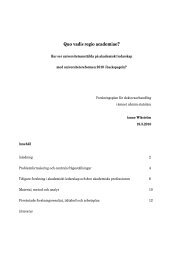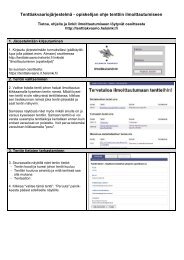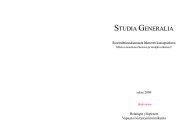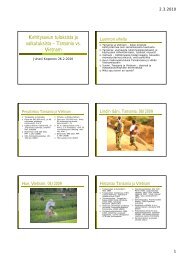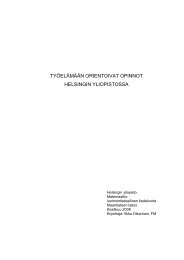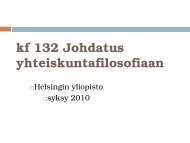the case of the 'urban villas'
the case of the 'urban villas'
the case of the 'urban villas'
Create successful ePaper yourself
Turn your PDF publications into a flip-book with our unique Google optimized e-Paper software.
Dr. Deborah Chatr Aryamontri<br />
Adjunct Pr<strong>of</strong>essor, Department <strong>of</strong> Classics and General Humanities<br />
Research Associate, Center for Heritage and Archaeological Studies<br />
Montclair State University<br />
Public display <strong>of</strong> private life: <strong>the</strong> emperor’s house<br />
Among Roman houses, <strong>the</strong> ones <strong>of</strong> <strong>the</strong> emperors stand out for having specifically been<br />
designed to serve both as public and private spaces, and <strong>the</strong>refore for exemplifying at its best<br />
<strong>the</strong> harmonization <strong>of</strong> <strong>the</strong> Roman ideals <strong>of</strong> otium and negotium.<br />
None<strong>the</strong>less, our perception <strong>of</strong> <strong>the</strong> two-fold nature <strong>of</strong> <strong>the</strong> imperial living conditions<br />
has been strongly influenced by biased interpretations <strong>of</strong> archaeological evidence and literary<br />
materials. The result is a conventional and rigid image <strong>of</strong> <strong>the</strong> imperial domus with its<br />
‘residential’ areas and ‘civil’ spaces, in which <strong>the</strong> latter included amenities such as<br />
amphi<strong>the</strong>aters and circuses that were meant not only for <strong>the</strong> emperor’s entertainment, but<br />
also, and foremost, for political display <strong>of</strong> his personal life. None<strong>the</strong>less, such a deep<br />
standardization and dichotomy in <strong>the</strong> designation <strong>of</strong> <strong>the</strong> various spaces is less accurate than<br />
we might picture. In truth, <strong>the</strong> architectonic concept <strong>of</strong> such a structured, monumental large<br />
estate to be <strong>the</strong> idyllic place <strong>of</strong> living for <strong>the</strong> emperor is <strong>the</strong> result <strong>of</strong> a development which<br />
occurred over time, and not in a straightforward manner.<br />
This paper aims to broaden our knowledge on <strong>the</strong> concept <strong>of</strong> imperial monumental<br />
residences as places for both personal recovery and playground for active public life, how it<br />
developed, and how different rooms might have presented diverse functions in a more<br />
osmotic and interactive way. It will analyze in particular <strong>the</strong> different imperial residences in<br />
<strong>the</strong> surrounding <strong>of</strong> Rome, from Anzio to Sperlonga to Arcinazzo and Tivoli, evaluating<br />
personal taste and objectives <strong>of</strong> each emperor at issue, from Augustus to Commodus, also in<br />
comparison with <strong>the</strong> architecture <strong>of</strong> <strong>the</strong> palatium in Rome.<br />
Through a critical reevaluation <strong>of</strong> <strong>the</strong> archaeological evidence and a reassessment <strong>of</strong><br />
literary sources, <strong>the</strong> paper will define a more accurate reconstruction <strong>of</strong> <strong>the</strong> life <strong>of</strong> <strong>the</strong><br />
emperors in <strong>the</strong>ir private and social sphere.



